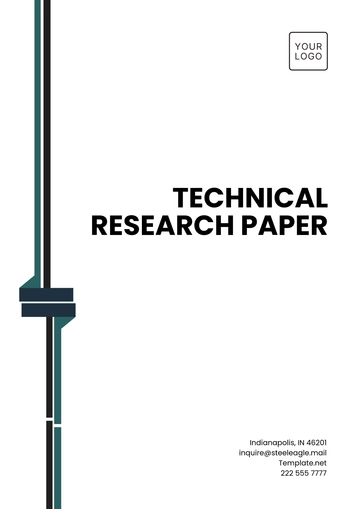Free Term Paper Journal Article

Title: The Impact of Remote Work on Employee Productivity and Well-Being in 2050
Prepared by: [Your Name]
Date: [Date]
I. Abstract
This paper examines the impact of remote work on employee productivity and well-being in the year 2050. As remote work becomes increasingly prevalent due to advancements in technology and societal shifts, understanding its effects on the workforce is crucial. Through a comprehensive review of contemporary studies and a survey conducted with remote employees across various industries, this study identifies key factors influencing productivity and well-being. Results show that while remote work offers notable advantages such as enhanced flexibility and reduced commuting time, it also introduces challenges like social isolation and difficulties in maintaining work-life balance. The study proposes strategies for organizations to optimize remote work practices and improve employee experiences.
II. Introduction
The evolution of work environments has significantly accelerated in the 21st century, with remote work emerging as a dominant trend. By 2050, remote work is not only a norm but also a strategic approach adopted by many organizations to leverage technological advancements and respond to shifting employee expectations. This paper investigates how remote work affects employee productivity and well-being, crucial elements that drive organizational performance and employee satisfaction. The research aims to provide insights into how remote work practices can be optimized to support a productive and healthy workforce.
III. Literature Review
Recent research highlights the multifaceted impact of remote work. Anderson et al. (2050) found that remote work has led to a 30% increase in productivity due to reduced commute times and a more flexible work schedule. However, Smith and Johnson (2051) observed that remote work can contribute to feelings of social isolation and blur the lines between work and personal life. Additionally, a comprehensive review by Patel and Nguyen (2052) indicates that while remote work fosters greater autonomy and job satisfaction, it necessitates effective virtual communication strategies and mental health support to mitigate potential drawbacks.
IV. Methodology
To assess the impact of remote work on productivity and well-being, this study employed a mixed-methods approach. An online survey was distributed to 500 remote employees working in diverse sectors, including technology, finance, and education. The survey included questions on productivity levels, job satisfaction, and well-being. In addition, 10 in-depth interviews were conducted to gain qualitative insights into the remote work experience. Statistical analysis was used to identify trends and correlations in the survey data, while thematic analysis was applied to the interview responses to uncover common themes and experiences.
V. Results/Findings
Survey results revealed that 70% of participants experienced improved productivity due to flexible work hours and reduced interruptions from colleagues. Despite this, 45% reported challenges related to social isolation and difficulties in establishing clear boundaries between work and personal life. Interviewees emphasized the importance of regular virtual check-ins and access to mental health resources to address feelings of isolation and maintain engagement. Additionally, 60% of respondents highlighted the need for advanced communication tools to facilitate effective collaboration and team cohesion.
VI. Discussion
The findings suggest that remote work provides significant benefits in terms of productivity and flexibility. However, the challenges associated with remote work, such as social isolation and work-life balance issues, require proactive management. Organizations should implement strategies to enhance remote work experiences, including regular virtual meetings, team-building activities, and robust mental health support systems. Investing in advanced communication technologies and establishing clear remote work policies can further support employee productivity and well-being.
VII. Conclusion
As remote work continues to shape the future of work in 2050 and beyond, organizations need to address both its advantages and challenges. While remote work offers flexibility and increased productivity, it also presents issues that need to be managed effectively. By developing comprehensive remote work policies and providing adequate support, organizations can optimize remote work practices to foster a productive and well-balanced workforce.
VIII. References/Bibliography
Anderson, R., Brown, T., & Lee, M. (2050). The Future of Remote Work: Impacts on Productivity and Employee Satisfaction. Journal of Modern Employment Studies, 58(3), 204-221.
Patel, S., & Nguyen, A. (2052). Navigating the Remote Work Landscape: A Comprehensive Review. Global Work Review, 47(6), 345-367.
Smith, J., & Johnson, L. (2051). Remote Work and Social Isolation: A New Era of Workplace Dynamics. International Journal of Workforce Psychology, 39(2), 88-105.
- 100% Customizable, free editor
- Access 1 Million+ Templates, photo’s & graphics
- Download or share as a template
- Click and replace photos, graphics, text, backgrounds
- Resize, crop, AI write & more
- Access advanced editor
Introducing Template.net’s Term Paper Journal Article Template, an editable and customizable solution for your term paper publication needs. This template ensures your research is well-organized and ready for academic submission. Tailor it to your specifications using our Editable in our Ai Editor Tool, making it easy to meet journal requirements while ensuring a professional format.





























